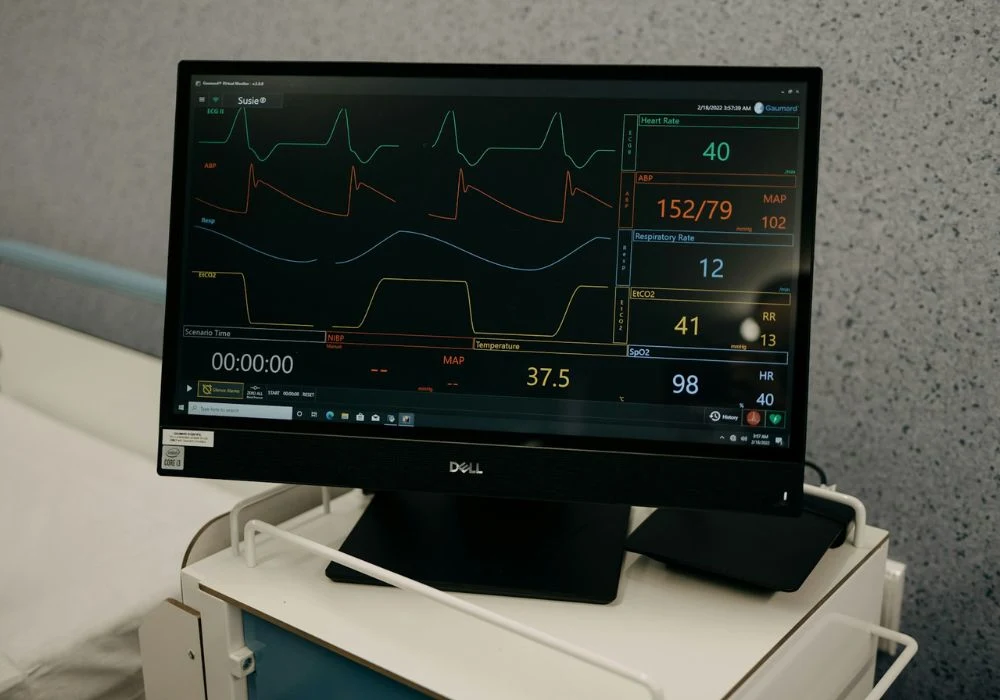Telemedicine in intensive care has evolved from early audiovisual links to integrated programmes that extend specialist input across hospitals and regions. The approach supports bedside teams under growing pressure from higher patient acuity, rising admissions and constrained workforce capacity. By connecting hub centres to spoke ICUs, tele-ICU seeks to translate expertise into consistent practice, reinforce quality measures and enable timely escalation. Reviews indicate potential improvements in length of stay and mortality, while multicentre trials show gains in process quality. Results are not uniform, reflecting variation in governance, staffing and data integration. The central question is how to organise tele-ICU so that remote advice reliably changes bedside care without adding unmanageable workload or undermining local ownership.
Adoption and Service Models
Tele-ICU encompasses a spectrum of designs shaped by geography, regulation and available expertise. The common hub-and-spoke model links an experienced remote team to one or more units using audiovisual connections, shared documentation and, in some cases, direct access to the electronic medical record. Some networks are internal to a single organisation, others span independent providers. Coverage ranges from 24/7 vigilance to scheduled rounds that focus on predefined patient cohorts or topics such as ventilation, sedation and infection control.
Must Read: Messaging-First Virtual Care Eases Telemedicine Bottlenecks
Remote teams typically include intensivists and critical care nurses, with access to subspecialists like neurology or infectious diseases when needed. Spoke ICUs vary widely in staffing and capability, from fully staffed units with board-certified intensivists to settings with limited onsite physician presence. Programme effectiveness depends on aligning responsibilities and escalation pathways so that recommendations translate quickly into action. Where remote teams provide structured oversight of agreed protocols, tele-ICU can help standardise practices that are unevenly implemented across sites.
Data integration is a major differentiator. Some programmes rely largely on audiovisual consultation. Others combine real-time telemetry, trend dashboards, alerts and quality reporting. Deeper integration supports proactive monitoring and more consistent follow-up of recommendations, but only if bedside teams have the capacity and authority to implement changes. The fit with local workflows matters as much as the technology stack. Programmes that respect existing processes, clarify decision rights and embed remote rounds within routine handovers are more likely to gain acceptance and avoid duplication.
Evidence and Quality Gains
Evaluations often focus on mortality and length of stay. Meta-analyses of before–after implementations suggest reductions, but heterogeneity across settings is substantial. More robust trials provide a nuanced picture. Multicentre cluster-randomised work demonstrates improvements in adherence to predefined quality indicators as a primary outcome, indicating that tele-ICU can be an effective vehicle for implementing evidence-based care. Another trial did not show a primary benefit on length of stay, and neither was powered to detect mortality differences, highlighting ongoing uncertainty about effects on hard outcomes.
A consistent signal is the link between improved processes and potential outcome gains. Programmes that target high-impact measures, monitor adherence and give timely feedback tend to show the clearest benefits. Large before–after analyses associate tele-ICU reengineering with better compliance to best-practice bundles. Yet progress is not universal across all domains. For example, remote teams did not consistently improve adoption of lighter sedation targets, illustrating the limits of influence when local barriers persist or when cultural change is required at the bedside.
Important gaps remain. Cost-effectiveness is not well characterised, particularly when accounting for technology, staffing and potential redistribution of workload. Training is another underdeveloped area. There is no standardised curriculum for intensivists practising remotely, despite the clear differences between bedside decision-making and tele-ICU oversight. Rapid advances in communication tools, analytics and remote assessment promise new capabilities, but their integration into ICU workflows needs rigorous testing to confirm safety, usability and impact.
What Drives Impact and Priorities
Impact depends on clinical expertise, defined responsibilities and integration with local teams. Tele-ICU rounds add value when led by intensivists with strong technical competence in the targeted domains and when the focus is on measures that the spoke unit does not already deliver reliably. Clear authority and accountability matter. Observational analyses suggest that models granting decision responsibility to tele-ICU intensivists are associated with better outcomes than consultative approaches that lack defined decision rights. Regardless of the model, timely communication, mutual trust and empathy are essential to align recommendations with bedside realities.
Leadership commitment underpins success. Hubs and spokes need shared objectives, practical availability and visible support for the programme’s role in patient care. Quality governance should anchor tele-ICU activity to indicators with established links to morbidity, mortality or patient-centred outcomes. Access to electronic records, automated alerts and adherence reports can amplify effect, but only if the spoke has the staffing, skills and equipment to act. Equity considerations are also critical. Populations and hospitals with fewer resources may benefit greatly from remote expertise, yet they face the steepest challenges in data access, staffing and infrastructure.
Priorities for research and policy include defining delivery models that consistently improve outcomes across diverse settings, standardising core programme elements and establishing meaningful, comparable endpoints. Developing structured training for tele-ICU professionals would help translate bedside competencies into remote practice. Economic evaluations should capture both direct costs and downstream effects on resource use, staff workload and patient flow. Finally, implementation guidance should address how to introduce tele-ICU without eroding local clinical ownership, ensuring that virtual teams enable rather than replace bedside judgement.
Tele-ICU can extend critical care expertise, strengthen adherence to evidence-based practice and improve process quality when responsibilities, workflows and data are well aligned. Effects on hard outcomes appear contingent on programme design, decision authority and the capacity of bedside teams to implement recommendations. Unresolved questions about cost, training and equitable access warrant targeted evaluation. The path forward is to focus programmes on high-impact measures, embed clear decision pathways and invest in data and people so that remote guidance reliably improves care at the bedside.
Source: Intensive Care Medicine
Image Credit: Unsplash










